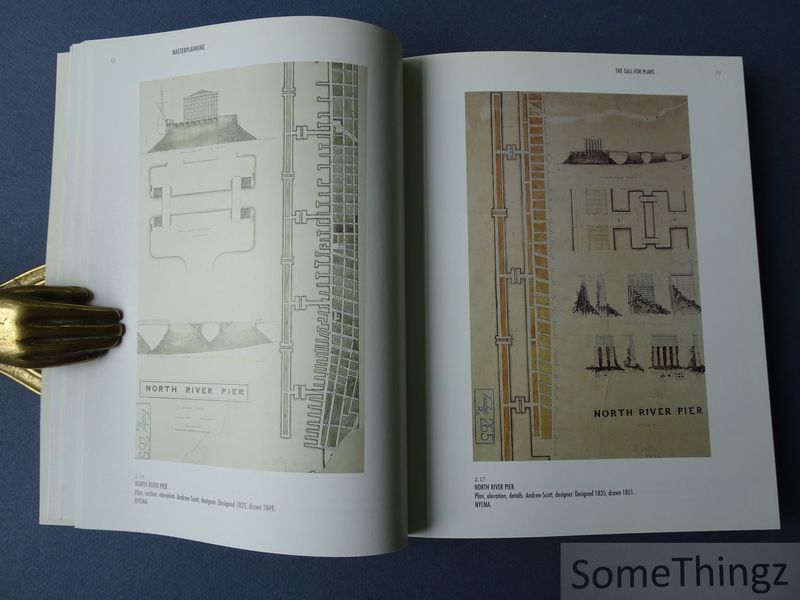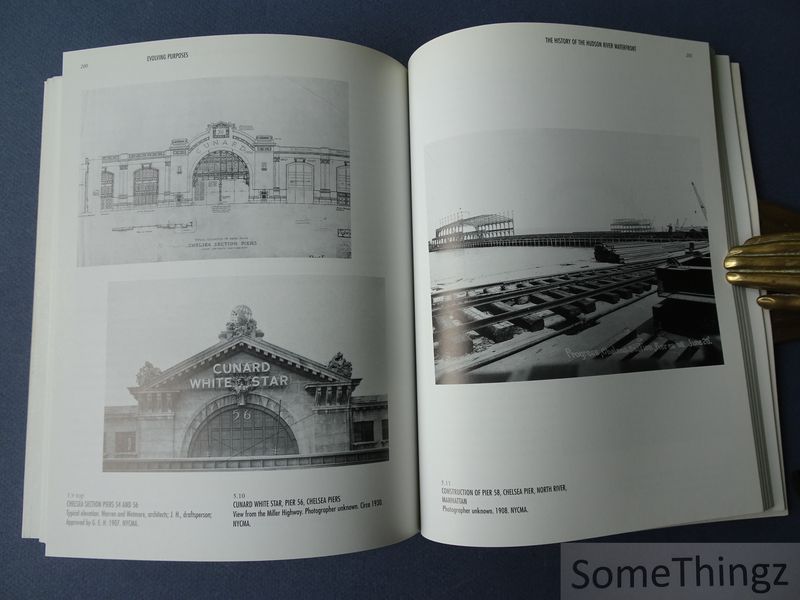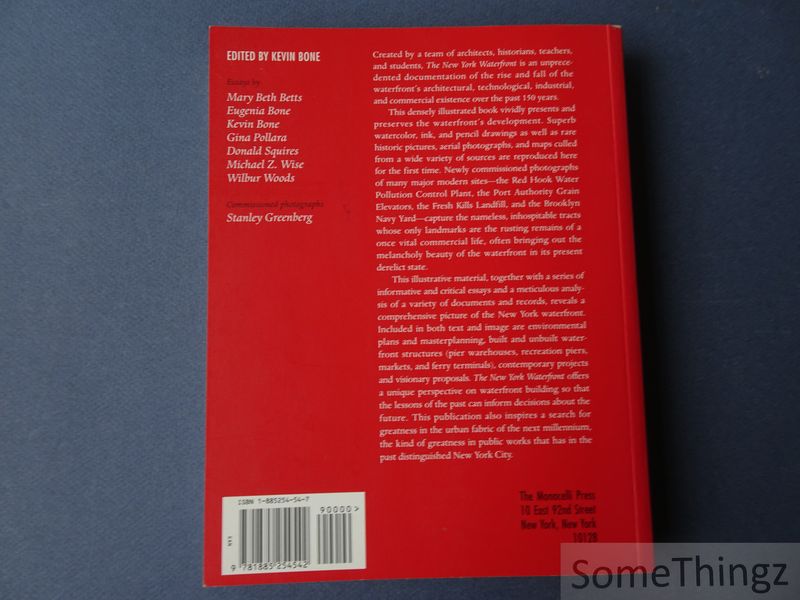BOOKS
Kevin Bone.
New York Waterfront: Evolution and Building Culture of the Port and Harbor.
The Monacelli Press, 2003.
€ 12.00
Softcover, 280pp., 18.5x23.5cm., richly illustr. in b/w., some ills. in col., in very good condition. ISBN: 9781885254542.
Created by a team of architects, historians, teachers, and students, The New York Waterfront is an unprecedented documentation of the rise and fall of the waterfront's architectural, technological, industrial, and commercial existence over the past 150 years. This densely illustrated book vividly presents and preserves the waterfront's development. Superb watercolor, ink, and pencil drawings?some specially created for this publication?as well as rare historic pictures, aerial photographs, and maps culled from a wide variety of sources and reproduced here for the first time, make this book the most comprehensive study on the subject. Newly commissioned photographs by Stanley Greenberg supplement this already rich array of images, often bringing out the melancholy beauty of the waterfront in its present derelict state. Also seen here are many major modern sites?the Red Hook Water Pollution Control Plant, the Port Authority Grain Elevators, the Fresh Kills Landfill, and the Brooklyn Navy Yard?capturing the nameless, inhospitable tracts whose only landmarks are the rusting remains of a once vital commercial life. This illustrative material, together with a series of informative texts written by critics and scholars, reveals a complete picture of the New York waterfront through contemporary projects and visionary proposals, environmental plans and master-planning, built and unbuilt waterfront structures (pier warehouses, recreation piers, markets, and ferry terminals), in addition to a meticulous analysis of a variety of documents and records. The New York Waterfront offers a unique perspective on waterfront building so that the lessons of the past can inform decisions about the future. This publication also inspires us to strive for an equivalent greatness when designing the urban fabric of the twenty-first century, the kind of greatness in public works that has in the past distinguished New York City.






